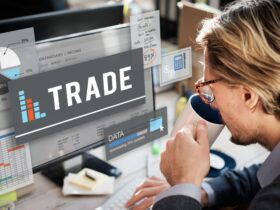Futures and commodities trading is an excellent way to invest your money, but it can also be incredibly risky. To help mitigate some of that risk, many traders turn to paper trading, a simulated form of trading where no actual money is used. In this article, we will discuss the benefits of paper trading futures and commodities.
Risk-Free Environment
The biggest benefit of paper trading is that it allows you to practice trading in a risk-free environment. Since you are not using real money, you can experiment with different strategies, trade without fear of losing money, and learn from your mistakes without incurring any financial losses. This is especially helpful for new traders who are just starting out and need to get comfortable with the trading process before risking their own capital.
Develop and Test Trading Strategies
Paper trading allows you to test and develop trading strategies without risking real money. This is particularly useful for developing and testing automated trading systems or strategies that require real-time data. You can backtest your strategies with historical data and refine them until you find a profitable approach that works for you.
Learn the Trading Platform
Most paper trading platforms are identical to their real-money counterparts. This means you can learn how to navigate and use the trading platform without risking your own capital. You can get comfortable with the trading platform, learn the functions and features, and experiment with different order types without risking your money.
Learn Market Mechanics
Paper trading allows you to learn how the market operates and how different factors affect the prices of commodities and futures. By watching the market in real-time and placing trades based on market trends, you can gain valuable insights into how supply and demand, economic data, and other factors impact the market.
Gain Confidence
Paper trading allows you to gain confidence in your trading skills before risking your own capital. By placing simulated trades and testing different strategies, you can build your confidence and feel more comfortable when you do start trading with real money. This can help reduce anxiety and prevent emotional trading decisions.
Low Cost
Paper trading is a low-cost way to learn how to trade futures and commodities. You don’t need to invest any money, and most paper trading platforms are free to use. This makes it an accessible option for anyone who wants to learn how to trade but doesn’t have a lot of money to invest.
No Time Constraints
Unlike real trading, paper trading allows you to trade at any time without worrying about market hours or other time constraints. This means you can practice trading on your own schedule, whenever it’s convenient for you.
Track Your Progress
Paper trading platforms often offer tracking and reporting features that allow you to monitor your progress and see how you’re doing over time. This can be a useful tool for identifying areas where you need to improve and tracking your growth as a trader.
Simulate Real Trading Conditions
Paper trading platforms often simulate real trading conditions as closely as possible. This means you can experience the same fluctuations in price, order fills, and other market conditions that you would experience in real trading. This helps you gain a better understanding of how the market operates and prepares you for real-world trading.
In conclusion, paper trading futures and commodities is an excellent way to learn how to trade without risking your own capital. It allows you to develop and test trading strategies, learn the trading platform, gain confidence, and learn how the market operates. Additionally, paper trading is low-cost, has no time constraints, and allows you to track your progress over time. If you’re new to trading or want to experiment with different strategies, paper trading is an excellent way to get started.











Leave a Reply